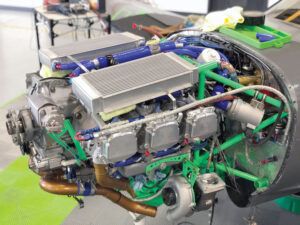
Air racing at Reno is part iron-age anachronism but also leading-edge development of the airplanes flying today. Where else can you say “4360 cubic inches” with a straight face, or witness what happens when you put 90 some inches of manifold pressure on a big-inch Continental or clip the wings on a Pitts?
It’s all exciting derring-do and especially so if you have some insight as to who’s doing what to whom. So, after the COVID-cancelled 2020 non-event and resultant financial cat-and-mouse, we’re pleased to say the Reno Air Racing Association (RARA) has found the means to put the pylons to use again this year, with the USAF Thunderbirds in attendance, no less.
This really is good news, and the performance tip of the Experimental/Amateur-Built spear—Sport Gold racers—are celebrating with new engines, propellers and reworked airframes. The forced stand-down due to COVID had mixed effects; it was a financial breather for some and lost income for others, not to mention a little extra time to procrastinate before returning to the tedium of testing and development. All told, we’re expecting a deep field of refreshed competitors in Reno this September 15–19.
Going for Gold
Holding multiple championships and Sport Gold’s outright fastest lap at 410 mph, Sport’s leading veteran Jeff LaVelle is a perennial threat. However, turbo oiling and especially landing gear frustrations have dogged his Glasair III the last several years. The turbos were fixed a while ago, and LaVelle is sticking to his 580 Lycoming’s mechanically fuel injected and twin magneto combination for now. But the landing gear continues to consume the two-year hiatus with inspecting, researching, redesigning and reworking what amounts to the entire wing. In short, the stock Glasair landing gear, which LaVelle rates as workable if not optimum on a 250-mph airplane and not suitable at all on a 400-mph race plane, suffered from a broken piano hinge (hidden and difficult to find) and has been replaced by Robbie Grove’s hydraulic system. In one of many examples of the elevated sportsmanship in air racing, Robbie, who’s partnered with Jim Rust and is thus a major Sport competitor to LaVelle, has been instrumental in getting the new landing gear fitted, notes LaVelle. No small task to retrofit to an existing plane, this has required wing removal and redesigning not only the gear, but the flight controls and fuel system due to packaging issues. While he was at it, LaVelle has completely faired in his flaps (they’ve been bolted shut for years) for a bit of aerodynamic cleanup. All this was nearing completion in late spring of this year, but LaVelle was noncommittal about making the 2021 races as there was still much to do. A real pity if he doesn’t as LaVelle is, as always, just the guy to give Sport’s golden boy Andrew Findlay a real fight.
Just One Moment
Findlay is absolutely up to the job as his Stihl-sponsored One Moment Team has both abnormally large size and depth of talent thanks to Findlay’s effervescence and organizational abilities. After dominating the 2019 races, One Moment Racing turned to their orange and white Lancair Super Legacy during the layoff intending to make it more racer and less sport plane. The interior is now down to the bare carbon (finally), and an instrument upgrade/lightening has seen a complete ship’s rewiring. The deep-breathing twin-turbo 550 Continental had 300 hours total time on it, 15 of those at over 60 inches of manifold pressure, so it was refreshed by Pinnacle Aircraft Engines. This included a new crankshaft as the team’s brain trust calculated the stresses involved required it (crankcases and crankshafts are expendables at this power level).
While they were at it, Pinnacle built a spare engine. “Normally we’ve come with two turbos, 10 pistons and eight cylinders [as spares], but now we’ll have a whole new engine to install,” says Findlay.
Furthermore, after giving clear signs it was crying uncle, Findlay’s 3-blade McCauley propeller has been upgraded to a 4-blade assembly. “McCauley designed the original prop at 750 hp,” says Findlay, “but now we’re around 900 hp [and] the three-blade hub was starting to pull the hub bolts out. After every run we checked the prop torque [and] we needed a new solution as it was always loosening.” Having exhausted McCauley’s six-bolt inventory, the prop maker moved to their eight-bolt, four-blade hub, which is well inside its power envelope at 1000 hp.
As the typical manually controlled, highly boosted Sport Gold engines have required a trained octopus to handle all the toggles and levers during the intensely busy race starts, increasing automation has been working its way into Sport engine management. One Moment Racing started a couple years back by moving from Continental’s mechanical fuel management to SDS’ well-regarded digitally controlled spark and EFI system. For 2021 they’ve added an SDS ancillary system to digitally control the water/methanol ADI. So, instead of a big slug of “water” during the start, the boost-referenced SDS system ramps the ADI in as needed while simultaneously leaning the air/fuel mixture accordingly. If you see Findlay making a quick move at the start, now you know why.
Circling Back
The message from down San Diego way is, “We’re going to bring a gun to a gunfight,” according to Jim Rust of Whirl Wind Propeller. Count on it, too, as Jim along with racing partner Robbie Grove of Grove Aircraft already showed the pair’s Lycoming-powered Glasair has the stuff to run over 400 mph in 2019. Since then they’ve built a fresh 540-based engine, tweaked the Airflow Performance fuel system, ditched intercooling in favor of less-restrictive ADI and have a new Whirl Wind propeller in development that should debut at the races. There are no airframe changes to the strictly-race Glasair III this year, but don’t be surprised if Rust plays the spoiler.
Another guy working around the clock to make 2021 is Tom McNerney building a Super Legacy. Aided by Findlay—“I gave him all the tricks: the belly mod, super-clean airframe…titanium bolts. He’s built such an amazing airplane; he’s an amazing builder. This will be their first year [with the Legacy], so [expect] teething pains but the project is solid.”—McNerney has long campaigned a Lancair 360, so he’s no rookie. One highlight is a wicked-fast but short-lived “NXT” Hartzell propeller, and by his own admission, Tom has built a monster Lycoming 580 “with a lot of my own parts.” Using Airflow Performance injection with 12 fuel injectors and his own custom draw-through turbo layout, Tom says, “It could be a gold winner if you want to risk the engine, which I don’t!” His plan is to run a solid third or fourth, but we know how that goes when the fast guys are just a little ahead of you. The big question is if McNerney can get the plane signed off in time. “I’m hoping to be there; it’s going to be close.”
More Eyes on the Prize
For radical engines Karl Grove’s stylishly dark gray Super Legacy has everyone beat. The ex-biplane racer is a principle at AC Aero Engines and at our deadline was just getting his liquid-cooled Centurion conversion back from engine assembly at Team ASAP. With the mechanically more rigid and likely detonation-resistant cylinders, Karl is talking over 100 inches of manifold pressure from 568 cubic inches, which ought to deliver spectacular results in any event. Karl skipped the PRS “test session” in June to continue building his plane, but says he’ll be racing in September. We’re expecting the usual teething issues and sneaking up on the boost this year, but the potential is huge.
Of course, there are many others in Sport. Thunder Mustang racers—namely Peter Balmer of Switzerland and Mathias Haid—have been working through engine management issues on their Falconer V-12s, but these can be very fast when running well. Dave Sterling, a perennial 380-mph Gold contestant, should show in his Legacy this year while we’re expecting Kevin Eldredge to appear in his wild NXT Relentless, but with work keeping him busy we’re not so sure he’s had much time to develop his twin-turbo 580 Lycoming.
There is plenty of crafty engineering in the Biplane and Formula One classes at Reno as well. Unfortunately, we can only skip over a few highlights here, but in Biplane the all-conquering Phantom of Andrew Buehler was receiving an engine freshening at our deadline. Jeff Rose has been building an advanced biplane racer but says it’s not ready for 2021 (2023 is more like it), so he’ll be the alternate pilot on Scott Thompson’s Pitts Second Hand. Technically, look for spray bar water cooling in Biplane this year, a first for this class we believe. And F1 is putting up the best racing of all with the impressive, always testing Justin Meaders; veteran everyman’s racer Lowell Slatter in Fraed Naught; Steve Senegal in the always fast Endeavor; and Justin Phillipson, who’s seemingly flown every airplane in the F1 hangar, as the apparent front-runners. See you there!


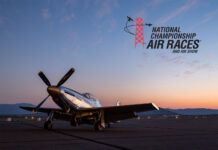
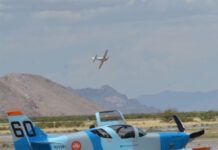
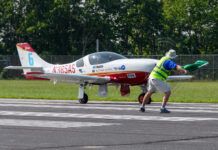
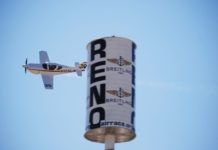
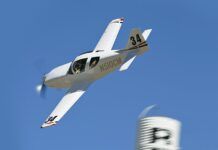
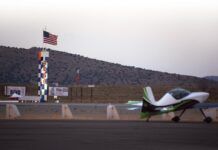
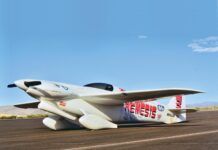
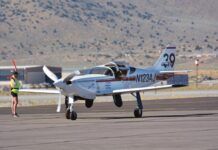
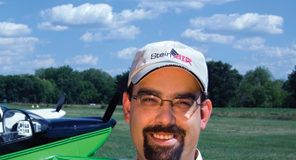
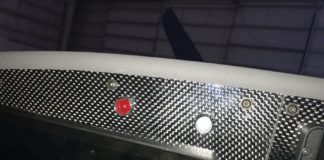

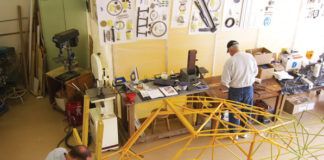
Awesome write up! In regards to Dave Sterling, he recently purchased Bob McCormack’s L-39 and was with it at PRS this year. He still has the Legacy, but will be focusing on the 39 for now. Kevin Eldredge has a new carbon fiber intake tube, but besides that I don’t think he’s done much more. Looking forward to this year as much as ever!!!